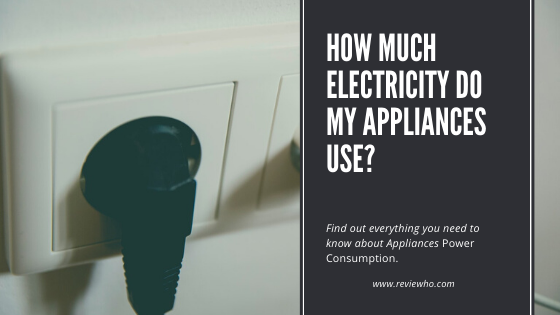Small appliances such as electric kettles and portable induction burners are considered to be ‘green’ appliances as they allow you to reduce everyday fuel consumption.
The idea is to use them frequently enough to offset the manufacturer’s cook print and select models that, compared to their conventional counterparts, utilize less water, fuel, or both.
The ‘greener’ appliances waste little fuel and are designed as closed systems with tight lids and heating systems that lock in any heat not allowing any to escape and instead heat the room thus ensuring efficiently cooked food complete with retained natural moisture.
This does not, however, justify the use of fad appliances like muffin makers, flowing chocolate fountains, electric fondue pots, and duel fuel ranges.
Read More: Gas Range Vs Dual Fuel
Cooking rice in an electric rice cooker rather than in a pot on the stove is the most energy-efficient way of cooking rice as the conventional methods use two to three times more fuel whilst also heating up the kitchen.
These cookers switch off automatically, can reheat cold rice perfectly, and can keep rice hot for a long time and you can get models that you can steam vegetables or other grains in.
If you do not eat enough rice to justify a rice cooker, you can cook your rice in a pressure cooker to save 50 percent of the energy you would use on a stove.
Slow cookers are another green option and they are coming back into fashion. They consume less electricity than an incandescent light bulb and are good in the summer as well as the winter as they do not give off heat.
Related: What is The Difference between a slow cooker and a crockpot?
Most newer models come with a removable pot (crock) which is heatproof so you do not need to move food into another pan if you just want to quickly brown something on the stove and the crock is usually dishwasher, microwave, and freezer proof.
Despite common misconceptions, slow cookers can cook much more than just soups and stews; you can use it to make anything from bean salads and roasted pecans to pasta sauces and lemon cheesecake.
To find out how much electricity a small appliance uses, have a look at the back, underside, label, or owner’s manual to check the wattage which is the maximum power that the appliance can use, and change settings, like changing from high to low, can reduce this amount.
You can purchase inexpensive energy meters which you can plug into a wall socket and it shows you the amount of electricity being used both actively and in standby modes some models can also calculate how much your usage costs in dollars if you enter your rate.
Always remember to unplug appliances when you are not using them, not only to avoid phantom loads when measuring your usage but also as it can be hazardous, costly, and sometimes even detrimental to your appliance.
How do I calculate how much electricity an appliance uses?
To estimate an appliance’s energy consumption, the Department of Energy has provided this formula:
Wattage x hours used per day ÷ 1000 = Daily kilowatt-hour (kWh) consumption
Using an electric fan as an example:
200 watts x 4 hours per day x 120 days per year ÷ 1000 = 96 kWh
You can then multiply this by the number of days that you use the appliance during the year to get an annual energy usage figure.
To calculate what the annual cost of running the appliance is, multiply the annual kWh by your local energy company’s rate per kWh consumed so using the fan example from above:
96kWh x 8.5 cents per kWh = $8.16 per year
Bear in mind,
However, if you are calculating figures for a refrigerator, to estimate the time it operates for a maximum wattage, you need to divide the full usage time by three as although they seem ‘on’ for 24 hours, they have an on and off cycle to maintain interior temperatures whilst being energy efficient.
Many of us have unused appliances lying around the house that we do not use but imagine if a tax was introduced on our electric gadgets, what would you keep?
Thrift shops are full of used appliances which can be old or new, quirky or conventional so why not try swapping some of your unused appliances for something useful that is a bit greener;
You would not only be saving the money for buying a new one, but you would also de-clutter in your home, save the appliance from going to a landfill, and be doing your bit for the environment.
Feel free to share your observation with me in the comments section!
Also, if you find the information in this post to be useful, be sure to share this post with your friends on Facebook, Twitter, and Pinterest.




